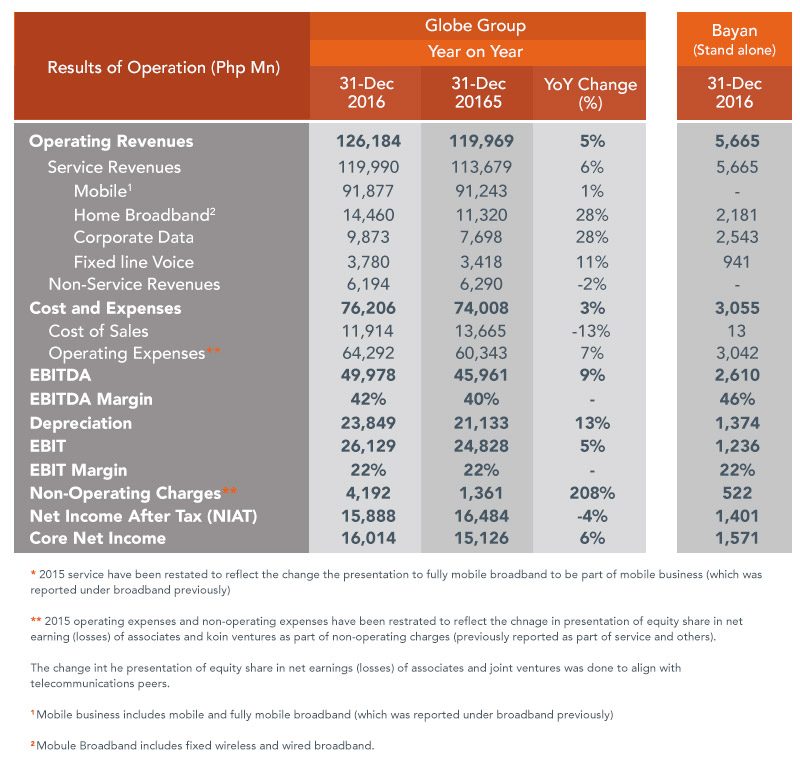SUMMARY
This is AI generated summarization, which may have errors. For context, always refer to the full article.

MANILA, Philippines – Having spent north of a billion dollars last year to acquire the tools to boost its mobile data, Globe Telecom will spend around $600 million this year further beefing up its network, particularly its LTE coverage.
“The bulk of our capital expenditure this year at 80% will really be for data-driven spending. Of that 80%, 65% will be for data networks while the balance will be for the core,” said Globe chief finance officer Rizza Maniego-Eala following the firm’s annual stockholders’ meeting on Tuesday, April 18.
Maniego-Eala added that the data-driven spending will focus on increasing the infrastructure to facilitate mobile data, broadband, and corporate data.
Globe previously said it has set aside $750 million, or P37.22 billion, as capital expenditure for this year. That figure, however, is lower than the $772 billion the firm spent last year.
Mobile data has been crucial to the telco’s revenues in recent years, hitting a watershed last year when it overtook voice to become the biggest contributor to total mobile revenues. Mobile data accounted for 38% compared to 37% for voice.
Maniego-Eala noted that the acquisition of San Miguel Corporation’s telco assets, including the 700 MHz band, was a major part of the expansion.
“Very quickly after we got the 700 MHz and 2600 MHz frequencies from the San Miguel acquisition [in May 2016] we’ve been able to blanket Metro Manila with LTE coverage,” she said, noting that Globe put up 500 new LTE 700 MHz sites last year.
The firm is targeting putting up 1,200 LTE 700 MHz sites this year, toward the goal of having 4,500 such sites in 3 years.
The majority of these new sites will be in Metro Manila, according to Maniego-Eala, while the firm can use the 2600 MHz frequency for Cebu and Davao.
She added that Globe has already raised the bulk of the funds for the planned spending and would raise the rest through a retail bond offering or loans from local banks, depending on revenues for the 1st quarter of 2017.
Net income down but core income up

The telco reported an audited net income after tax of P15.88 billion for 2016, which was down 4% from its 2015 net income of P16.48 billion.
The firm’s revenues and EBITDA (earnings before interest, taxes, depreciation, and amortization), however, were up 5% and 9% respectively.
Core net income, defined as net income after tax but excluding foreign exchange and mark-to-market gains (losses), and non-recurring items, was also up by 6% at P16.01 billion.
Maniego-Eala explained that the lower net income was mainly due to one-time deals. She pointed to the rise in core net income as a better indicator of the firm’s performance.
“Last year, we had gains from the Yondu sale which we did not have this year. On top of that, we had to absorb a little over P1 billion in equity and subsidiary losses from the acquisition of San Miguel’s telco assets,” she said.
Homeowners more open
The telco also said it is making progress in its bid to get more exclusive villages in Metro Manila to open up to telco infrastructure.
Globe released an open letter addressed to homeowners in late March, clarifying concerns about the supposed health risks associated with putting up cell sites.
Since the letter’s release, 7 homeowners’ associations have approached the firm to discuss the matter, according to Maniego-Eala.
“The good thing is that they are approaching us and trying to see how they can have our services or infrastructure in their premises and also hopefully to increase the quality of service in their village,” she said.
“Apparently not a lot of homeowners know that their associations have blocked the putting up of cell towers. Now they know the reason why they don’t have the quality of service they want on the mobile side,” she added. – Rappler.com
Add a comment
How does this make you feel?
There are no comments yet. Add your comment to start the conversation.